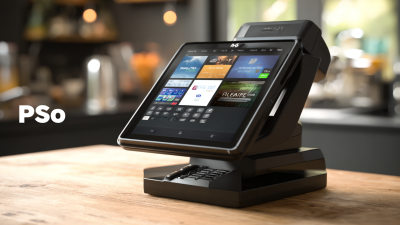
In an increasingly digital world, where screens dominate our daily interactions, the need for
enhanced visual comfort has never been more critical.
Anti-Glare Glass has emerged as a fundamental solution, providing not only clarity but also a
significant reduction in eye strain. According to a report by the
Vision Council, nearly
60% of adults experience symptoms of digital eye strain, which can be alleviated by using the right screen technology.
 Anti-Glare Glass minimizes reflections and glare, fostering a more immersive viewing experience while protecting the eyes from harsh light conditions.
As industries from consumer electronics to automotive design integrate this innovative glass, understanding its benefits and features becomes essential for consumers seeking optimal visual performance.
In this blog, we will explore the myriad advantages of Anti-Glare Glass and how it meets diverse needs across various applications.
Anti-Glare Glass minimizes reflections and glare, fostering a more immersive viewing experience while protecting the eyes from harsh light conditions.
As industries from consumer electronics to automotive design integrate this innovative glass, understanding its benefits and features becomes essential for consumers seeking optimal visual performance.
In this blog, we will explore the myriad advantages of Anti-Glare Glass and how it meets diverse needs across various applications.
 In today's digital age, the importance of
anti-glare glass cannot be overstated. Modern display technology is integral to our daily lives, from smartphones to large-screen televisions. However, the glare produced by ambient light can significantly hinder the viewing experience, leading to eye strain and discomfort.
Anti-glare glass addresses this issue by utilizing special coatings that reduce reflections and enhance clarity. By minimizing distractions from bright environments, users can enjoy a more immersive experience when engaging with their devices.
In today's digital age, the importance of
anti-glare glass cannot be overstated. Modern display technology is integral to our daily lives, from smartphones to large-screen televisions. However, the glare produced by ambient light can significantly hinder the viewing experience, leading to eye strain and discomfort.
Anti-glare glass addresses this issue by utilizing special coatings that reduce reflections and enhance clarity. By minimizing distractions from bright environments, users can enjoy a more immersive experience when engaging with their devices.
Moreover, anti-glare glass offers practical benefits beyond improved visibility. In professional settings, where screens are often viewed in bright office environments, this technology helps maintain productivity and focus. Additionally, the durability of anti-glare coatings protects screens from scratches and smudges, ensuring that the display remains clear over time. As we continue to rely heavily on displays for work, entertainment, and communication, embracing anti-glare technology is not only wise but essential for optimizing our interactions with the digital world.
Anti-glare glass has become increasingly popular across various applications due to its ability to minimize reflections and enhance visibility. One of the key features of anti-glare glass is its special coating, which reduces glare by scattering light rather than allowing it to reflect directly off the surface. According to a report by Transparency Market Research, the global demand for anti-glare glass is projected to witness significant growth, estimated at a CAGR of 6% from 2021 to 2028. This rise is attributed to the growing need for improved visual comfort in environments such as offices, schools, and homes.
Another important aspect to consider is the application of anti-glare glass in consumer electronics, particularly in devices like monitors and smartphones. A study published by the International Journal of Human-Computer Interaction highlighted that displays with anti-glare properties can reduce eye strain by up to 40%, making them ideal for prolonged use. Furthermore, the durability of anti-glare coatings increases their lifespan, thereby lowering replacement costs over time. As consumers become more conscious of visual health and comfort, the demand for products featuring anti-glare glass is likely to grow, making it a vital consideration for manufacturers and designers alike.
Driving at night can pose significant challenges, particularly due to the glare from oncoming headlights and streetlights, which can affect visibility and lead to discomfort. Anti-glare glass plays a vital role in enhancing eye comfort by reducing these harsh light reflections. Research indicates that nearly 70% of drivers report discomfort due to glare at night, making it crucial to consider the type of lenses used in eyewear. Anti-glare coatings effectively minimize this issue, allowing for a clearer view and reducing eye strain during nighttime driving.
Recent advancements in lens technology have resulted in a variety of coatings designed to improve visual clarity and comfort. The optometric community has acknowledged that lenses with anti-glare properties can reduce reflections from screens and bright lights by up to 90%. This reduction significantly enhances long-term comfort for users, particularly in environments with challenging lighting conditions, such as offices or while engaging with digital devices. Selecting the right anti-glare lens can thus greatly impact overall eye health and comfort, especially in our screen-dominated world.
When it comes to protective glass, understanding the differences between anti-glare glass and other types is crucial for making an informed decision. Anti-glare glass is specifically designed to reduce reflections and improve visibility, making it ideal for environments with bright lighting and glare issues. Unlike regular glass, which can intensify reflections, anti-glare glass employs a special coating that diffuses light, allowing for clearer images and comfortable viewing. This makes it a popular choice for both residential and commercial applications, especially for displays, monitors, and windows.

Tips for selecting anti-glare glass include considering the specific lighting conditions of your space and how the glass will be used. For example, if you're using the glass in an area with direct sunlight, opt for a higher-grade anti-glare solution to ensure maximum clarity and reflection reduction. Additionally, look for options that offer scratch resistance, enhancing the durability and lifespan of your investment.
While tempered glass offers strength and safety, it does not necessarily address glare issues. If glare is a primary concern, anti-glare glass is the superior choice. In contrast, laminated glass provides additional safety but may not effectively reduce reflections. Weighing these features against your needs will help you choose the best protective glass for your specific situation.
When selecting the right anti-glare glass for your needs, it is essential to consider various factors including environment, usage, and specific glare reduction requirements. According to a report from the Glass Association, approximately 90% of professionals working in industries such as design and architecture prefer anti-glare glass due to its ability to significantly improve visibility while reducing eye strain. This feature is especially beneficial in settings with abundant natural light, where glare can be particularly disruptive.
Moreover, different anti-glare glass options are available depending on the level of diffusing and reflectivity required. Research from the Optical Society indicates that glass with a matte finish can reduce reflectivity by up to 95%, making it ideal for offices and study areas. For outdoor applications, such as signage and windows, selecting tempered anti-glare glass can enhance durability while maintaining visibility. Understanding these specifications will help ensure you choose the most appropriate anti-glare glass tailored to your specific visual and environmental needs.
| Feature | Description | Benefits | Ideal Use Case |
|---|---|---|---|
| Anti-Glare Coating | A special coating that reduces reflections. | Improved visibility in bright environments. | Outdoor displays, monitors. |
| Scratch Resistance | Durable surface that resists scratches. | Increased longevity of the glass. | High-traffic areas, educational setups. |
| Anti-Fingerprint Technology | Repels fingerprints and smudges. | Easier maintenance and cleaner appearance. | Touchscreens, display panels. |
| UV Protection | Blocks harmful UV rays. | Protects skin and reduces fading of materials. | Windows, art displays. |
| Impact Resistance | Resistant to breakage from impacts. | Enhanced safety and durability. | Public spaces, schools. |





